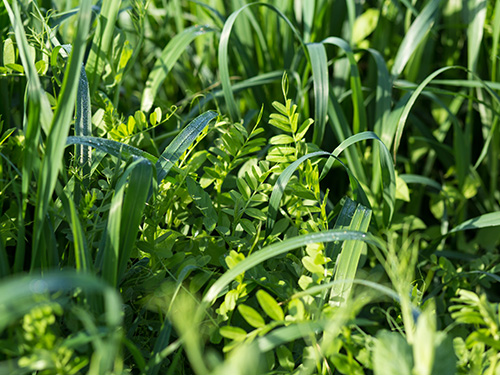Prepare Your Garden: Benefits of Fall Cover Crops
Sep 30, 2024

As fall approaches, don’t let your garden sit idle. Leaving soil exposed not only invites weeds but also risks the loss of vital nutrients. By planting cover crops, you can protect your soil throughout the winter and set yourself up for a thriving garden in the spring.
Cover crops act as a protective shield, preventing soil compaction, reducing erosion, and capturing nutrients that would otherwise be lost. Though commonly used by large-scale farmers, home gardeners can benefit just as much. Think of cover crops as nature’s way of nourishing your soil while keeping it active during the colder months. The key to successfully using cover crops lies in proper timing and crop selection.
Fall cover crops should ideally be planted from mid-September through mid-October, following your primary vegetable harvest. This window allows the crops to establish before winter sets in, but depending on the timing of your harvest, fall weather conditions may make it challenging to sow during this period.
Choosing the right cover crop species is equally important since different plants offer different benefits. Small grains like barley, oats, rye, triticale, and winter wheat are excellent for building organic matter and suppressing weeds. Legumes such as crimson clover, red clover, hairy vetch, and winter pea are a great option for adding nitrogen to the soil, even though they may not produce as much biomass as small grains. This nitrogen becomes available to your spring vegetables, giving them a nutrient-rich environment to thrive in.
To get started, clear your garden of debris and stones, then evenly broadcast the seeds. Lightly rake the soil and water the area with a fine mist. You can boost the effectiveness of your cover crop by adding a balanced fertilizer like 10-10-10 or a nitrogen-specific mix like 5-10-10 if using legumes.
Remember to till the cover crop at least two to three weeks before planting your spring garden to give it time to break down and enrich the soil. Also, be sure to cut the cover crop before it flowers, or you may inadvertently introduce new weeds.
Investing a bit of time this fall in cover crops will reward you with healthier soil, fewer weeds, and a more productive garden next year. Visit your local Co-op for expert advice, tools, and all the seeds you need to get started. For more recommendations on which cover crops are best for your region, reach out to your local Co-op agronomist.
Find the nearest location here. For more content like this, check out the latest issue of The Cooperator.
Cover crops act as a protective shield, preventing soil compaction, reducing erosion, and capturing nutrients that would otherwise be lost. Though commonly used by large-scale farmers, home gardeners can benefit just as much. Think of cover crops as nature’s way of nourishing your soil while keeping it active during the colder months. The key to successfully using cover crops lies in proper timing and crop selection.
Fall cover crops should ideally be planted from mid-September through mid-October, following your primary vegetable harvest. This window allows the crops to establish before winter sets in, but depending on the timing of your harvest, fall weather conditions may make it challenging to sow during this period.
Choosing the right cover crop species is equally important since different plants offer different benefits. Small grains like barley, oats, rye, triticale, and winter wheat are excellent for building organic matter and suppressing weeds. Legumes such as crimson clover, red clover, hairy vetch, and winter pea are a great option for adding nitrogen to the soil, even though they may not produce as much biomass as small grains. This nitrogen becomes available to your spring vegetables, giving them a nutrient-rich environment to thrive in.
To get started, clear your garden of debris and stones, then evenly broadcast the seeds. Lightly rake the soil and water the area with a fine mist. You can boost the effectiveness of your cover crop by adding a balanced fertilizer like 10-10-10 or a nitrogen-specific mix like 5-10-10 if using legumes.
Remember to till the cover crop at least two to three weeks before planting your spring garden to give it time to break down and enrich the soil. Also, be sure to cut the cover crop before it flowers, or you may inadvertently introduce new weeds.
Investing a bit of time this fall in cover crops will reward you with healthier soil, fewer weeds, and a more productive garden next year. Visit your local Co-op for expert advice, tools, and all the seeds you need to get started. For more recommendations on which cover crops are best for your region, reach out to your local Co-op agronomist.
Find the nearest location here. For more content like this, check out the latest issue of The Cooperator.